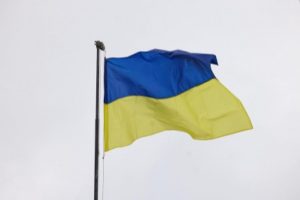As the United States is grappling with the Coronavirus ourbreak making it the worst-hit country in the world, its Department of Homeland Security revealed to media new technical details regarding its highly anticipated study into how ultraviolet radiation destroys COVID-19, saying that its experiment had accurately mimicked natural sunlight.
News agency AFP reported that the Department of Homeland Securities revealed these technical details to the agency on Tuesday.
Advertisement
DHS official William Bryan had briefed the media that the amount of virus on a non-porous surface shrunk by half in just two minutes when sunlight was present, the temperature was 70-75 degrees 21-24 Celsius and humidity was 80 percent.
The amount of virus suspended in air shrunk to half its amount in just 1.5 minutes at room temperature and 20 percent humidity, he added.
The White House played host, where a summary of the research was presented last week, with some scientists calling for caution until a more comprehensive report was made public.
US President Donald Trump’s suggestion last week was met with aversion when he used his daily live national press briefing to ask whether light could become a medical treatment.
He had said, “Supposing we hit the body with a tremendous – whether it’s ultraviolet or just very powerful light,” he said. “Supposing you brought the light inside the body, which you can do either through the skin or in some other way.”
Health experts quickly shot down his suggestion that people inject disinfectants to cure the virus.
Director of the Center for Radiological Research at Columbia University, Medical Center, David Brenner said, “These eye-catching results surprised experts because most of the UV light contained in natural sunlight belongs to a subtype called UVA, which causes human skin to tan and age but has not generally been proven harmful to viruses.”
On the other hand, a part of the spectrum called UVC is particularly adept at warping the genetic material of animal and virus cells and is widely used in sterilizing lamps, but it is not present in sunlight because it is filtered out by the Earth’s atmosphere.
Lloyd Hough, a DHS scientist overseeing the test said, “The spectrum of light that was used was designed to approximate natural sunlight that you would expect to see at noon at sea level at a mid-latitude location (e.g., mid-Atlantic, 40 degrees N) on the first day of summer,” when askedfor further details on the type of UV light that was used.
“More specifically, it approximates the wavelengths of light predicted by the National Center for Atmospheric Research’s (NCAR) Tropospheric Ultraviolet and Visible (TUV) Radiation Model for noon at 40 degrees N latitude at sea level on June 21st in range of 280 and 400 nanometer wavelengths,” he added.
The wavelengths specified pertain only to long and medium-wave ultraviolet, also known as UVA and UVB , the UV components of sunlight that penetrate the atmosphere – and not UVC.
“This test was conducted at the National Biodefense Analysis and Countermeasures Center in Maryland and it was carried out on droplets of simulated saliva on a stainless steel surface,” said a DHS spokesman.
Brenner, who is himself performing research into another area of the UV spectrum called far-UVC, which kills microbes without penetrating human skin, said the DHS findings did not comport with previous research.
“There is a peer-reviewed paper in the literature from the FDA (Food and Drug Administration) showing the earlier SARS-CoV virus did not respond to UVA light (though it did respond to UVC light),” he said, adding it is “reasonable to assume that all coronaviruses respond roughly the same way to light.”
The results as presented were “straining credulity,” but the study would soon be submitted for peer review and published in scientific journals, according to the DHS spokesperson.
“While the results are still undergoing a rigorous scientific review, we felt it important to share information on the emerging trends that are being identified in our tests,” the spokesman said.
In America the number of confirmed coronavirus cases has crossed 1 million mark and the fatalities have crossed 58,356 mark , according to Johns Hopkins University data.
(With agency inputs)











